Why is Microplastics in the sea and the environment a problem and how does it get there in the first place? It wasn't too long ago that we were still very little concerned with the Microplastics busy. The small plastic parts, which are smaller than 5 mm, are unfortunately difficult to detect and yet part of one of the biggest environmental problems of our time - the Plastic waste in the environment.
In this article you will learn everything about microplastics in the ocean and the environment. From statistics, to causes, to consequences and solutions. Let's go!
The following is a short Table of contents about the contribution:
NoteWhen I talk about plastic waste in the sea in the article, this usually also automatically refers to plastic waste in the environment. Because even microplastics that are initially produced on land eventually end up in the sea through rain, sewage and rivers.
Facts & figures about microplastics in the environment
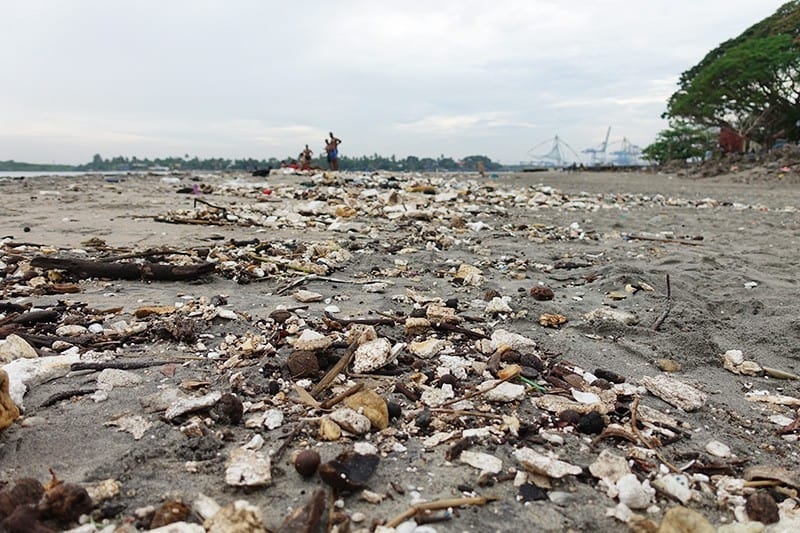
In order to understand what kind of problem we are dealing with when it comes to microplastics in the ocean, it helps to have confirmed facts & figures. The following Estimates of the Federal Environment Agency₁ on the subject of microplastics in the environment should make it clear to everyone how serious the situation is:
- 80 - 400 t Microplastics flow into the sea or the environment every year when we wash our clothes
- 60.000 - 111.000 t Microplastics enter the environment and ultimately the ocean every year through tire wear from road traffic
- 21.000 - 210.000 t of microplastics in the environment are produced each year during the manufacture and transportation of plastic products due to the loss of the small, raw plastic pellets.
It's frightening that our laundry, driving, and production of plastic products alone account for such a large percentage of the microplastics released into the environment each year.
I will now discuss these and other causes of microplastics in the ocean in the following paragraph.
Causes of microplastics in the ocean
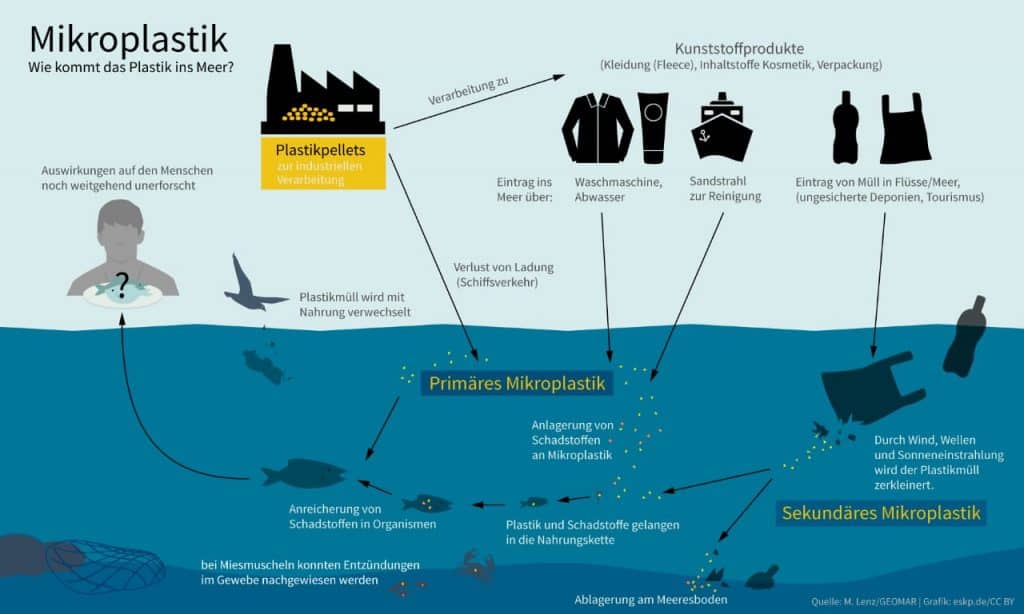
Before I tell you the causes, I would like to explain something essential about microplastics in the environment. As you can see in this graphic, microplastics can be divided into primary and secondary microplastics:
- Primary microplastics: This refers to plastic in raw, tiny form - as so-called plastic pellets. For example, we find Microplastics in cosmetics or in clothing. Primary microplastics also end up directly in the sea as a result of sandblasting during the cleaning of ships.
- Secondary microplastics: This form of microplastic is created when larger pieces of plastic break down over the years. Through sun, wind, friction and waves, a plastic bottle, for example, can decompose into more than 10,000 small plastic parts in about 500 years.
Through these definitions of the BUND₃ you now know that microplastics in the sea are basically two overriding causes has.
On the one hand, wastewater treatment plants cannot prevent microplastics from entering our waters from our households (e.g., as ingredients in shower gels and scrubs) and ultimately the ocean. On the other hand, larger pieces of plastic that have at some point entered the environment, such as plastic cups or plastic bags, gradually decompose into microplastics.
The most common sources of microplastics
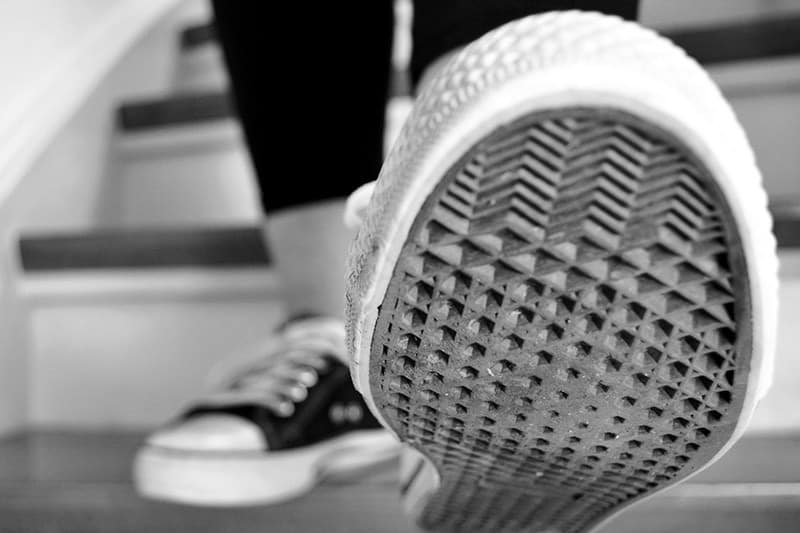
We now know how microplastics get into the sea. But how should we think about this in terms of our everyday lives? Where do I leave microplastics behind every day? A 2018₄ study by the Fraunhofer Institute for Environmental, Safety and Energy Technology in Oberhausen provides a clear answer to this question based on annual grams per capita values:
- Car tires (1,228.5 g / per capita per year)
- Waste disposal (302.8 g / per capita per year)
- Asphalt (228 g / per capita per year)
- Plastic granules (182 g / per capita per year)
- Sports and playgrounds (131.8 g / per capita per year)
- Construction sites (117.1 g / per capita per year)
- Shoe soles (109 g / per capita per year)
- Plastic packaging (99 g / per capita per year)
- Road markings (91 g / per capita per year)
- Textile Laundry (76.8 g / per capita per year)
So in the way we drive our cars, exercise, do our laundry, or just go shopping, every single citizen, no matter how far from the ocean, also has a part in the microplastics in the ocean.
Consequences of microplastics in the sea
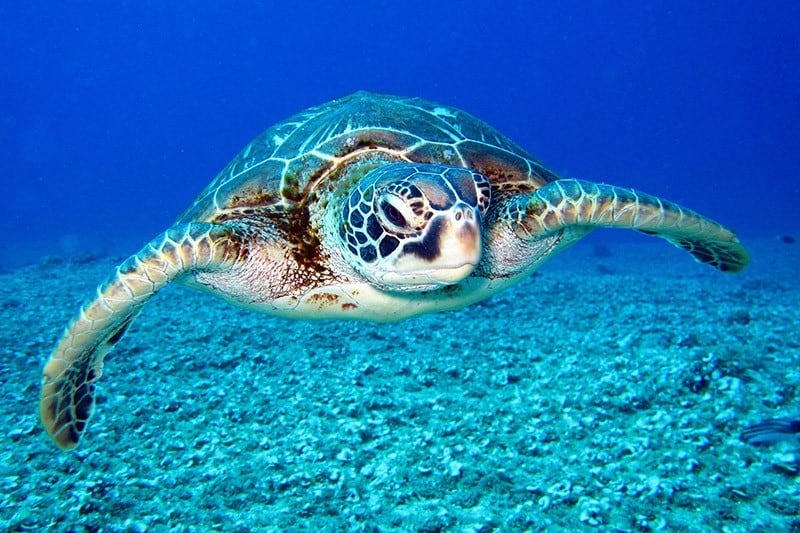
Whether large or small plastic parts - does not really matter. Because even the large plastic parts, such as bags or bottles eventually decompose into secondary microplastics in the sea. Every year, about 8 million more tons of plastic waste end up in the ocean, eventually to be found in the 5 huge Trash swirls circling on our oceans.
According to studies, by 2050 we will have as many plastic particles and microplastics in the sea as fish. Our behavior will not remain without consequences.
Consequences of microplastics for the environment
Every year, about 100,000 marine mammals and 1,000,000 seabirds die from the effects of large and small plastics in the ocean.₅
The animals take it for food or choke themselves on the stable plastic. Even corals or krill can ingest microplastics in the sea, which means that the plastic is already waiting to be passed on at the beginning of the food chain.
I would like to explain the consequences of large plastics and microplastics in the ocean using a discarded plastic six-pack ring:
- Someone throws a six-pack ring into the sea.
- A young sea turtle gets its head caught in the plastic ring so it won't come off.
- The sea turtle grows and the ring begins to constrict her head and eventually costs her life.
- Over the course of many years, the six-pack ring gradually decomposes into smaller microplastics.
- A salmon mistakes the microplastic in the ocean for food and eats the plastic.
- The plastic goes into the cells of the fish. (Microplastics in the food chain)
- We eat the fish including the microplastic.
By the way, NABU has published a recommendable brochure on the consequences of plastic and microplastics in the sea, which you can download here. you can see here.
Consequences of microplastics for our health
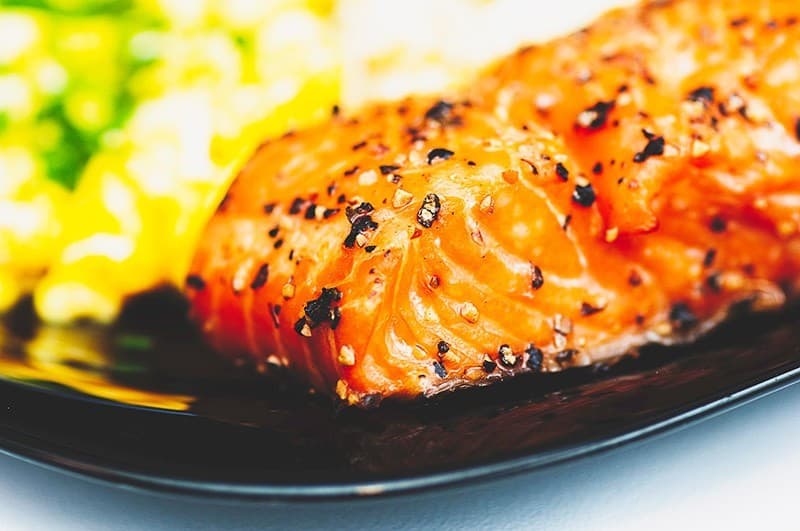
As you have already seen in the paragraph about the causes of microplastic in the ocean, we have the microplastic caused by ourselves in the form of oysters or fish finally back on our dining table.
The highest number of microplastic fragments found in the stomach of one fish was 83.
Christiana M. Boerger (Marine Pollution Bulletin 60)
Marine researchers have found 83 microplastic particles₆ in a single fish alone. This is how the Plastic into the food chain (bioaccumulation of toxins) and eventually ends up as a component of our meals.
The health consequences of microplastics in our food chain for us humans are largely unexplored. The only thing that is clear is that in marine animals such as crustaceans or mussels, for example, you can find Inflammation, physiological disorders and higher mortality rates cause.
All the more reason to work on solutions to the problem of microplastics in the sea.
Solutions against microplastics in the sea
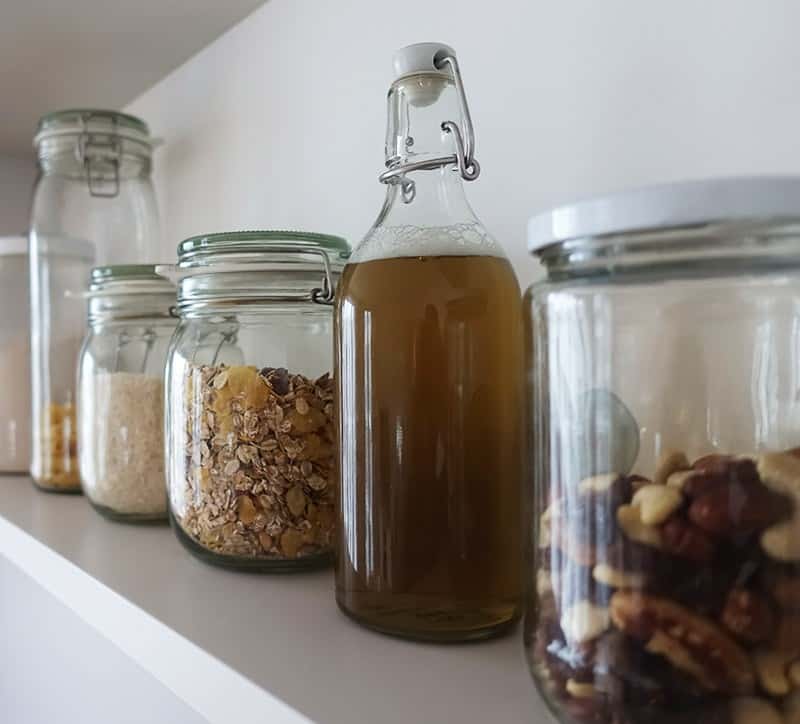
The possible solutions against microplastic are so incredibly diverse that it is difficult to name them all. Nevertheless, I have compiled a small overview of possible solutions and approaches to the problem of microplastics in the sea:
1. plastic free living against microplastic
By living as plastic-free as possible, you not only reduce your packaging waste, but also your contribution to the microplastic problem. Replace single-use plastic products with reusable ones. For example, replace a plastic straw with a washable straw. Stainless steel straw. You can learn more about this in the article Life without plastic.
2. living car-free for less microplastic
Since every German leaves behind an average of 1,228.5 g of microplastic per year from the abrasion of car tires alone, one rule for less microplastic in everyday life is obvious. The less you drive, the less microplastic you produce. You can read more about this in the article Life without car.
3. clothes without plastic - or laundry bags
While clothing made from hemp or other plant fibers used to enjoy a hippie image, it is sustainable clothing today the absolute trend. Organic cotton, linen, hemp or modal. Natural materials have brought a breath of fresh air into the dusty and anything but sustainable fashion industry. So to prevent microplastics in the ocean from your washes, you can customize your clothes, for example. The alternative is offered by the Guppyfriend wash bagin which the clothes with plastic fibers are placed before washing. The bag catches the dissolved microplastic fibers and prevents them from going down the drain.
4. separate waste correctly against microplastic
In waste disposal according to the Fraunhofer Institute even 302.8 g / per capita of microplastics produced annually, it also helps to reduce the Separate garbage properly or not to produce it at all. In the article sustainable lifehacks of our grandparents you will learn how the latter was already implemented by grandma & grandpa. In a time, by the way, when there were Plastic did not yet exist.
5. use apps against microplastic
The smartphone is not only available for Angry Birds, but can also prevent microplastics in the sea. Use the App CodeCheckwhich you can use to scan and expose products in the supermarket. It immediately shows whether microplastics are hidden in shower gels, creams and other products. With the App Replace Plastic you can also scan the manufacturer and tell them that you would have bought their product without microplastics or plastic packaging.
Microplastics in the ocean & environment
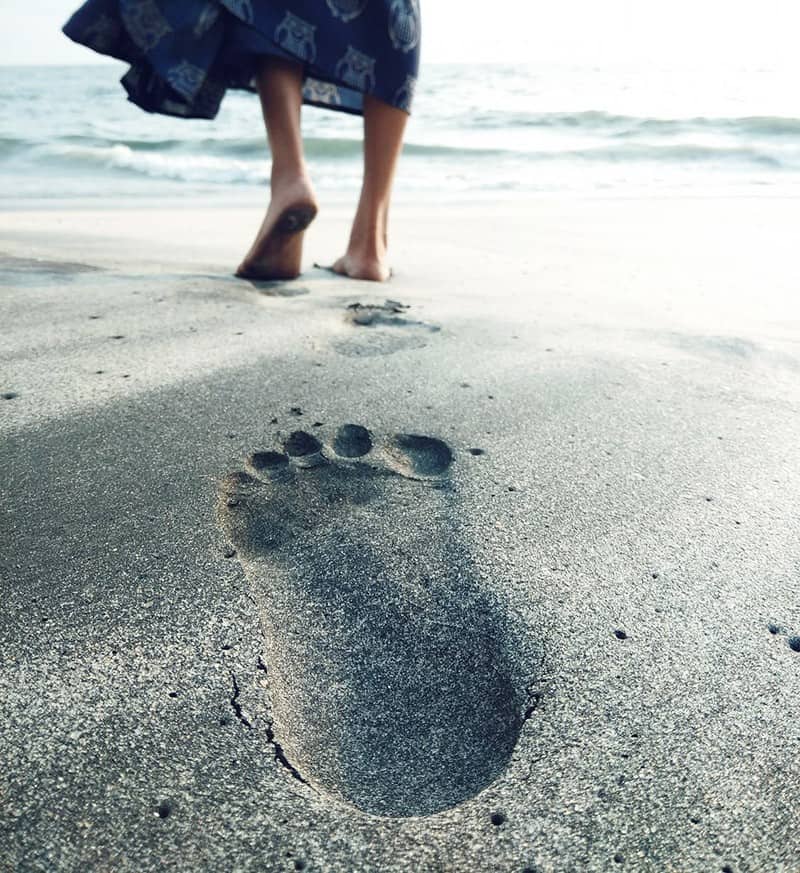
And since microplastics also enter the environment through shoe soles - of course also as much as possible Walk barefoot. 😉
Joking aside! You don't have to be extreme to save microplastics from the ocean or the environment. But it helps to know the sources of microplastics in order to reduce your personal share of the problem with microplastics in the environment.
As you can see, the barely visible microplastic has become a massive Environmental problem developed that threatens not only the environment and animals, but also our own health. Although time is of the essence, there is a solution to every problem - including microplastics in the environment. How you can be part of the solution instead of part of the problem is what you learned in this article. Let's make the most of it!
Stay clean,

PS.: In the article Zero Waste Lifestyle you will learn all the basic rules for making your everyday life as waste-free as possible. And under Avoid microplastics you will learn more about reducing the mini plastic in everyday life. Have fun!
References:
₁ https://www.umweltbundesamt.de/presse/pressemitteilungen/mikroplastik-im-meer-wie-viel-woher
₂ eskp.de/CC BY 4.0, Helmholtz Knowledge Platform "Earth and Environment", ESKP.
₃ https://www.bund.net/meere/mikroplastik/hintergrund
₄ https://www.forschung-und-lehre.de/forschung/fraunhofer-identifiziert-quellen-von-mikroplastik-983
₅ https://www.nabu.de/natur-und-landschaft/meere/muellkippe-meer/muellkippemeer.html
₆ Chr.M. Boerger et al, 'Plastic ingestion by planktivorous fishes in the North Pacific Central Gyre', in Marine Pollution Bulletin 60 (2010), pp. 2275-2278.

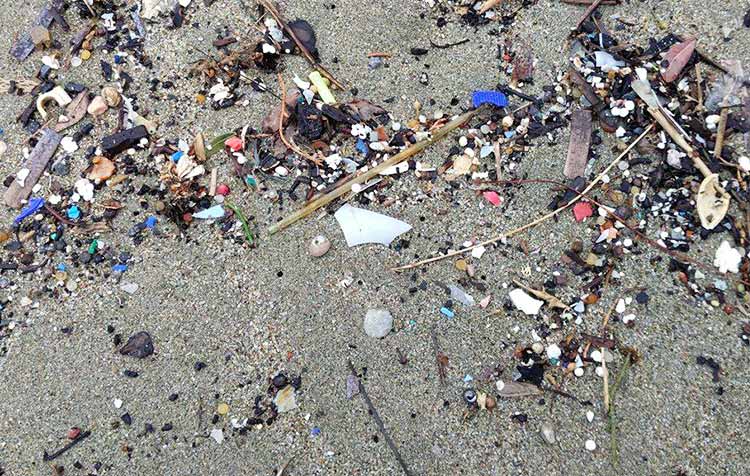
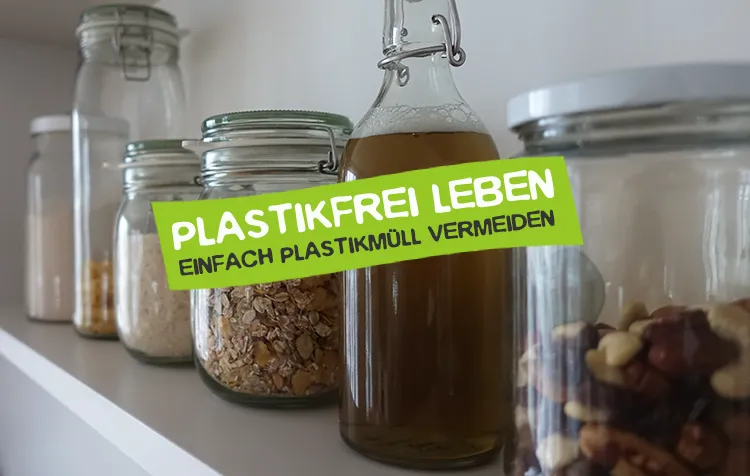


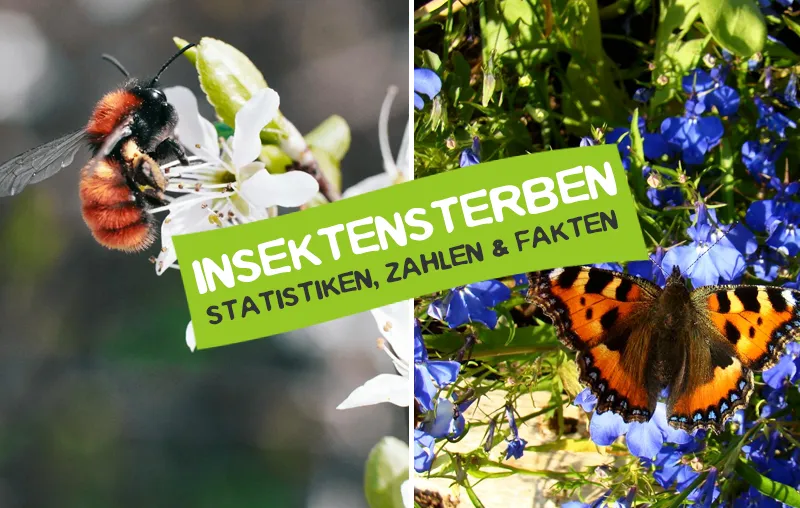
Super article, with a very nice reappraisal of the topic of microplastics. There are many more ways to do without plastic.
Greetings and keep it clean,
Oliver
Hello Oliver! Thanks for your feedback 🙂 Definitely! Feel free to check out our article about the plastic free lifestyle in. There you will find over 100 tips.
Best regards
Christoph
Woow thanks
Hi Andreas,
Bits! 😉
Greetings
Christoph
Comments are closed.